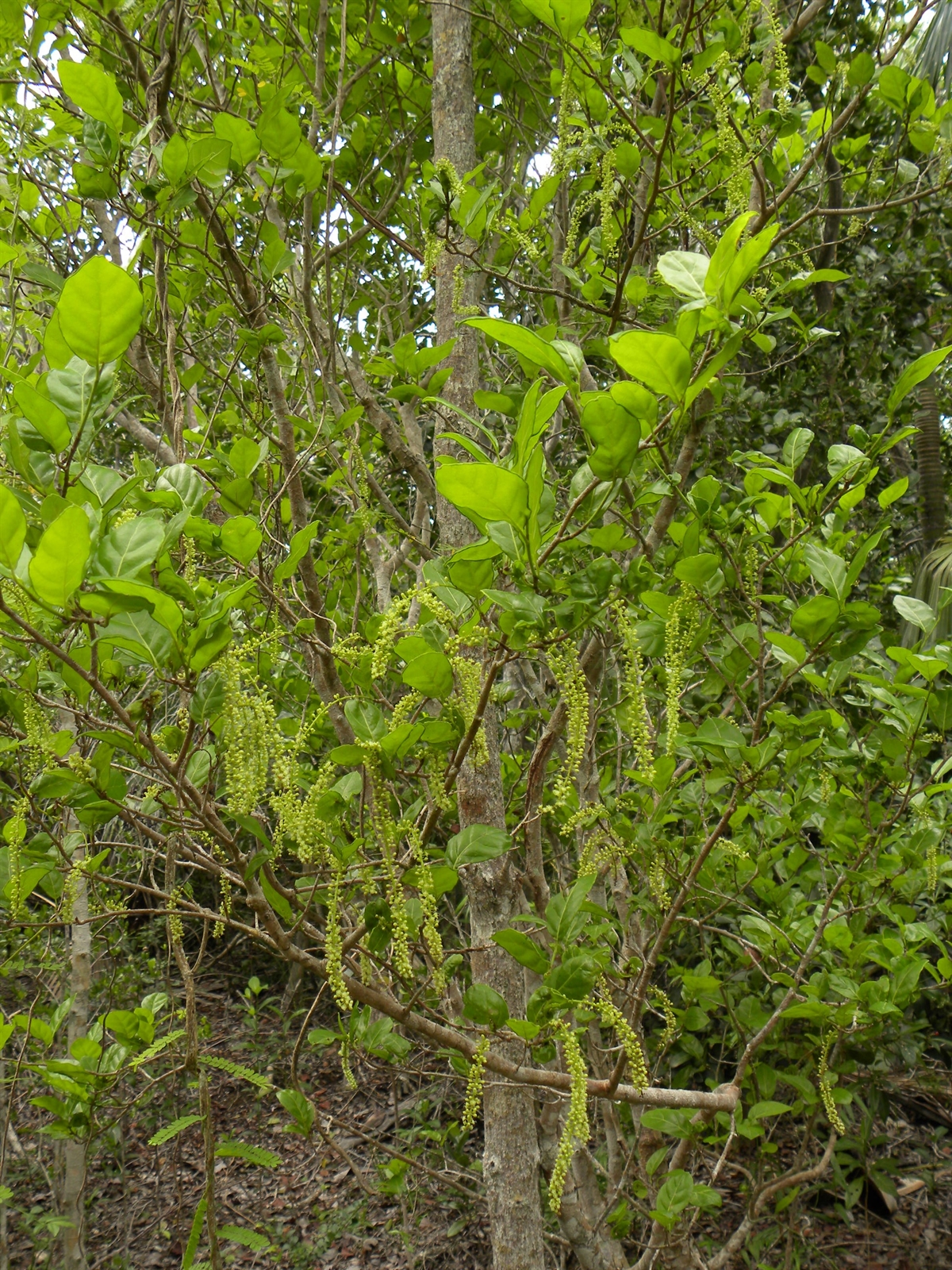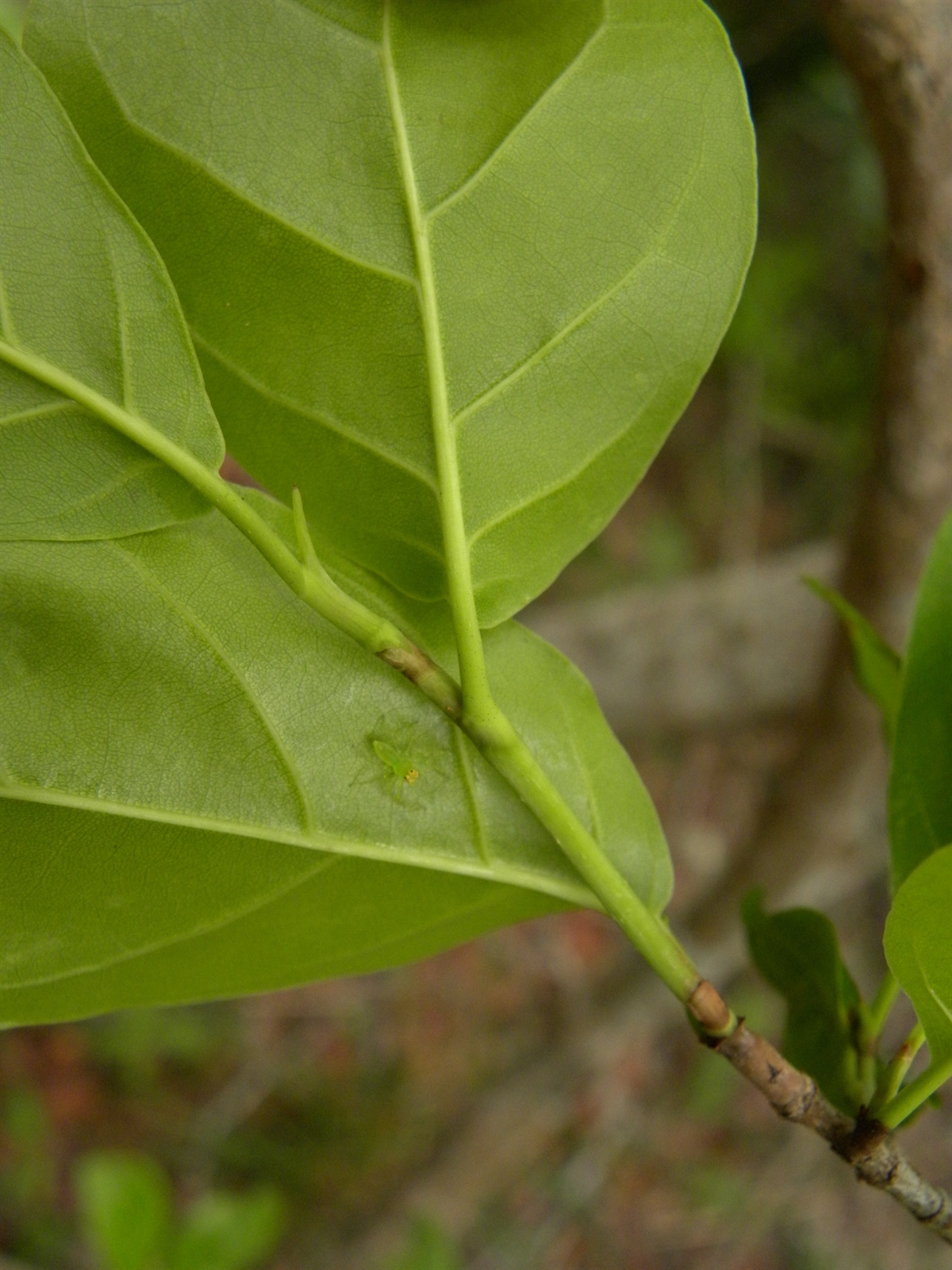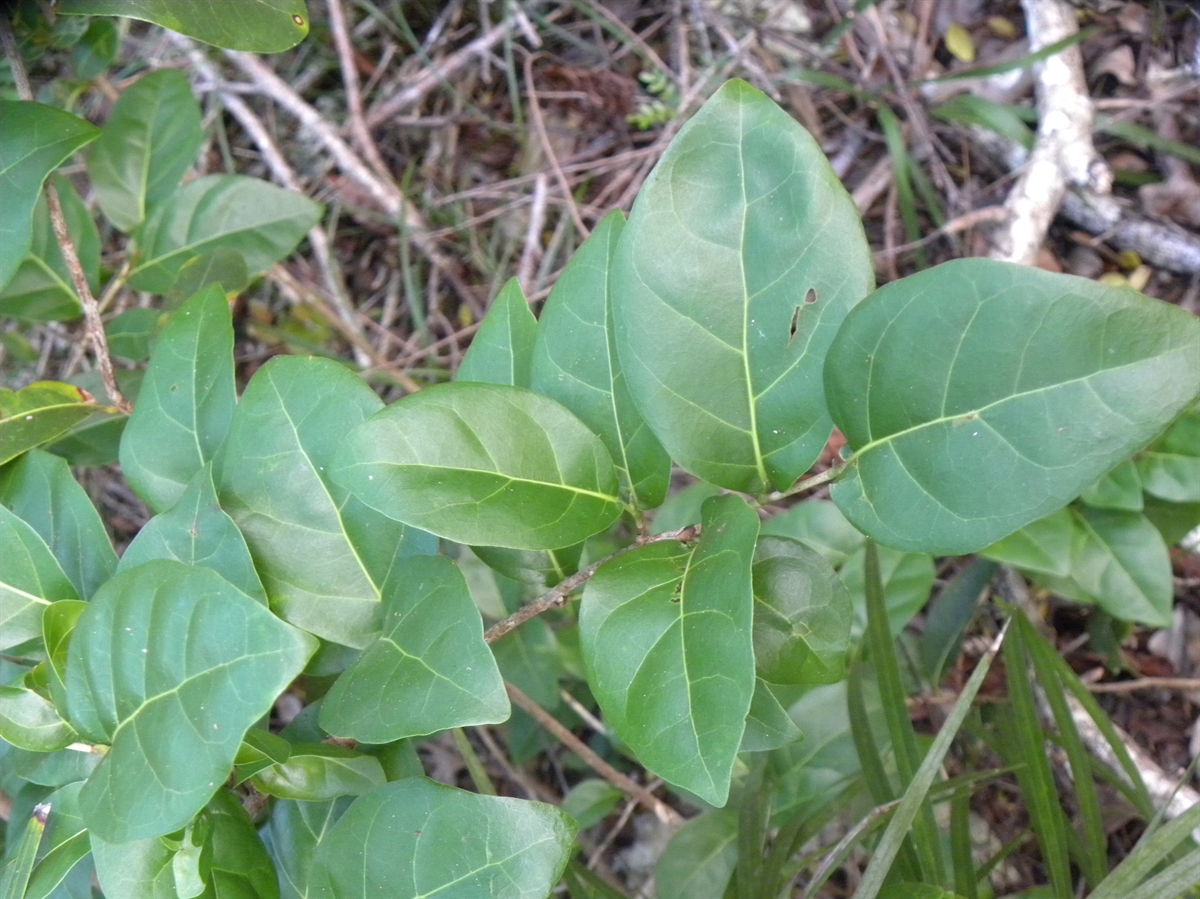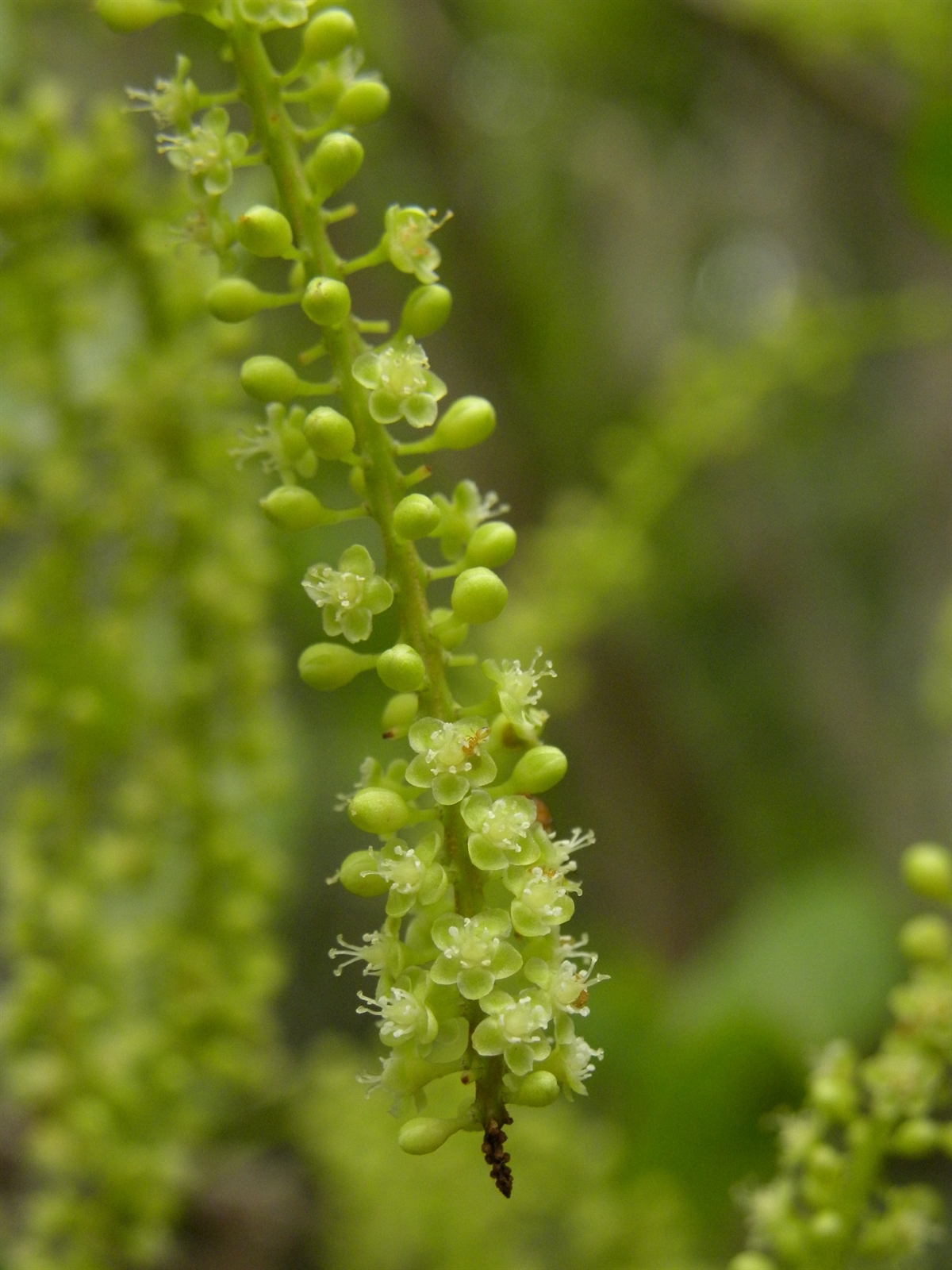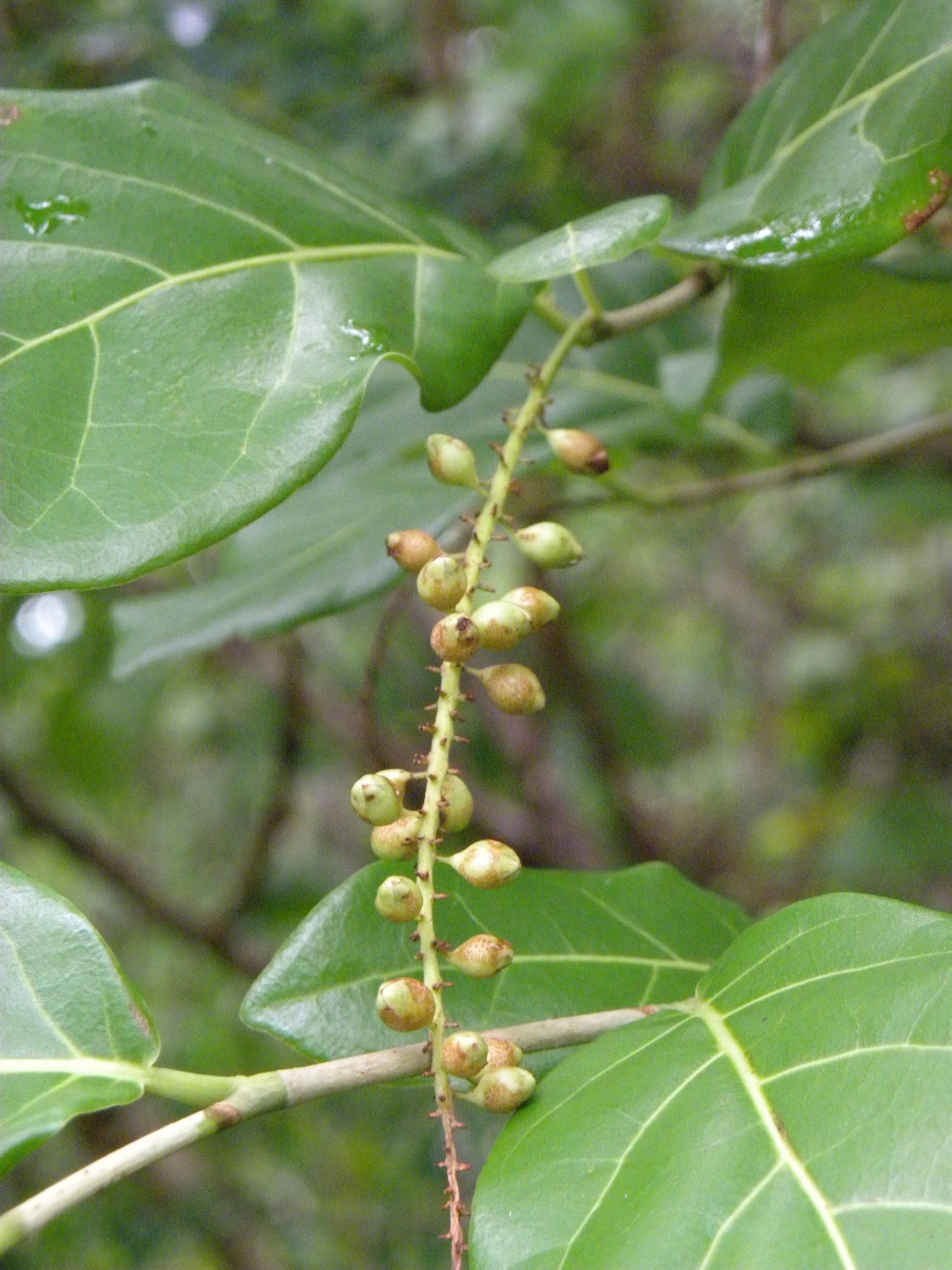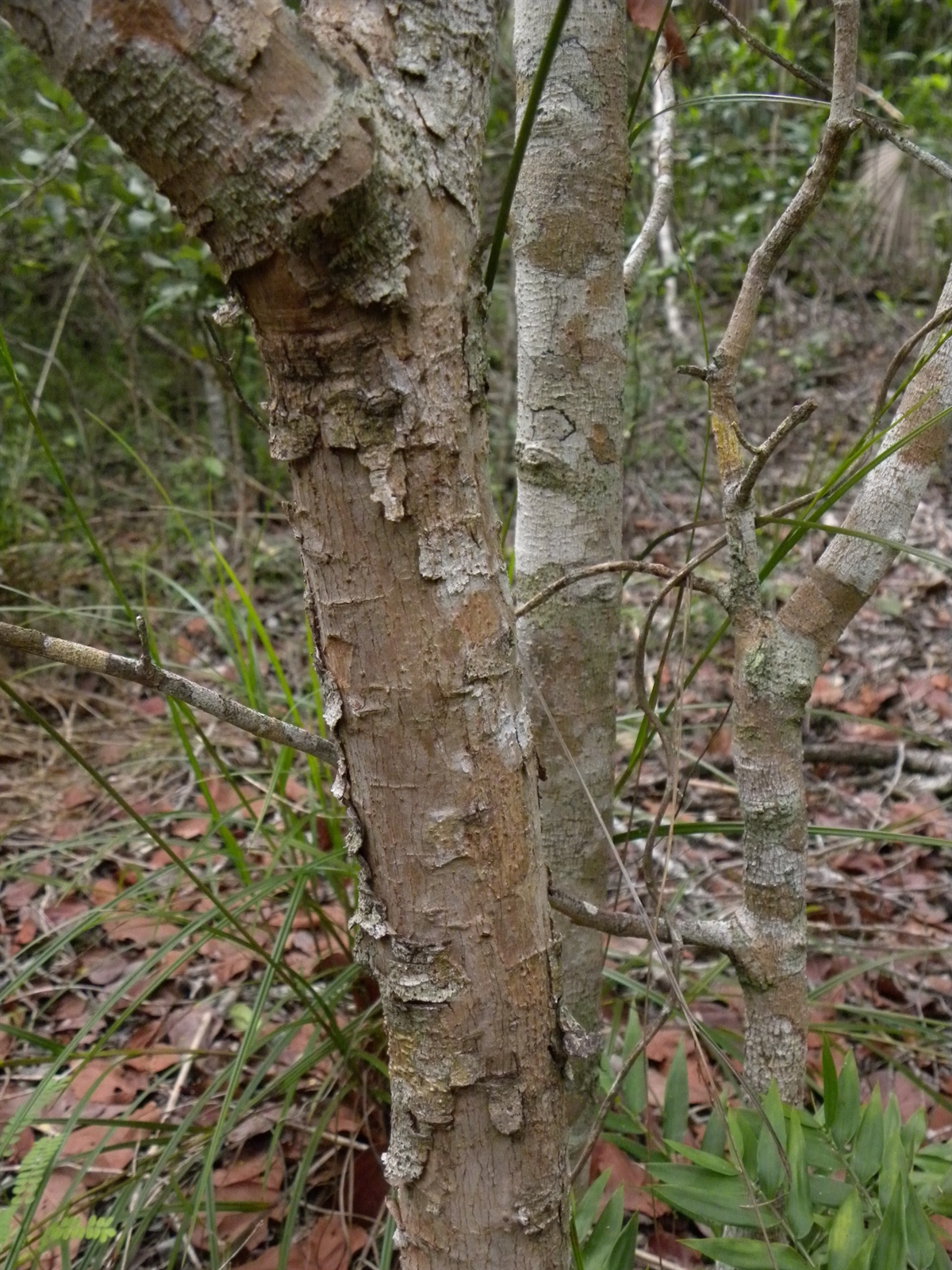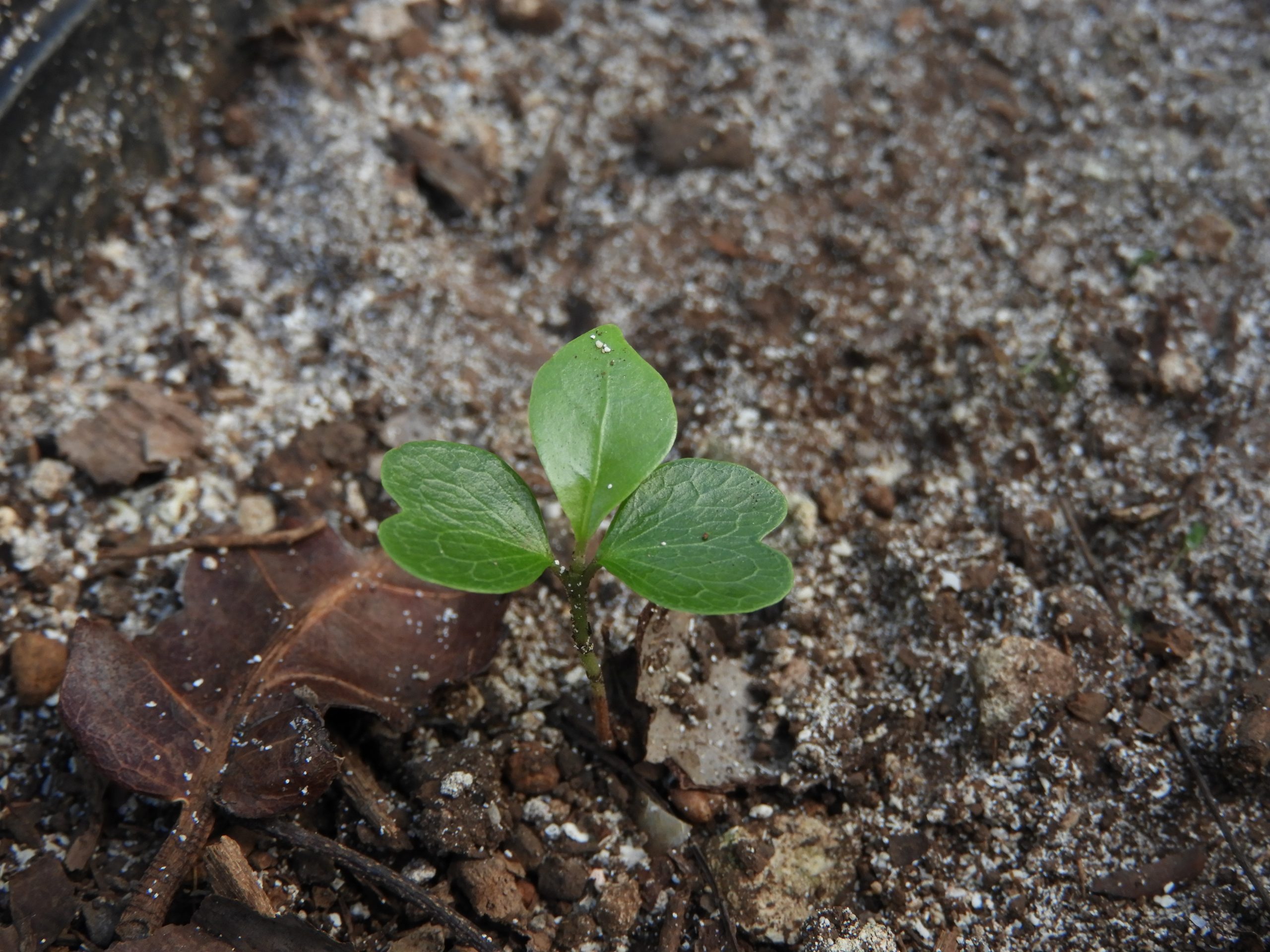Habit: Coccoloba tenuifolia grows as a shrub to small tree to 6 meters in height. The leaves are arranged alternately, to 12 cm in length, ovate with an acute leaf apex and entire margin. The petioles have small trichomes that help to distinguish it from C. diversifolia. There is a small deciduous sheathing ocrea extending from the petiole surrounding the stem above the internode when there are new leaves.
Coccoloba tenuifolia is dioecious. The incomplete, imperfect, actinomorphic flowers are arranged in racemes. The calyx has 5 green sepals. The corolla has 5 whitish petals. There are 8 stamens. In staminate flowers the stamens are fertile and are 3 times the size of the infertile ovary. In carpellate flowers the stamens are infertile and shorter than the ovary. In both types of flowers the calyx, corolla, and stamens are fused to form a shallow hypanthium. At the base of the hypanthium are nectaries. The ovary is superior with a single locule. The fruit is a drupe that turns reddish-black at maturity.
Habitat: Coccoloba tenuifolia grows in Dry Broadleaf Evergreen Formation- Forest/Woodlands/Shrublands/Dwarf Shrublands (coppice, scrublands) as well as Pine Woodlands.
Distribution: Coccoloba tenuifolia occurs on all island groupings within the Lucayan Archipelago as well as Cuba and Jamaica.
Medicinal/Cultural/Economic usage: Coccoloba tenuifolia is not used medicinally in the Lucayan Archipelago. The fruits are edible although very acidic.
